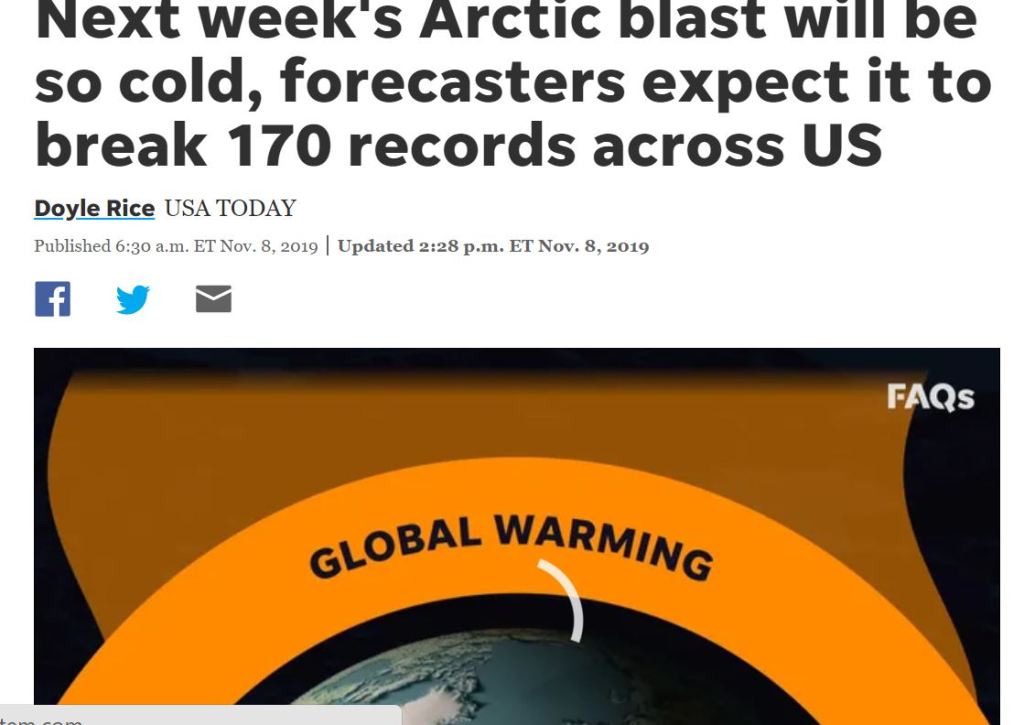I understand: (1) Climate is not weather, except when it is. (2) Global warming means milder winters but also harsher winters.
Far from expert on the issue, but can USA Today please up its science-journalism game? The video accompanying this article promises to explain why “Climate change is making winters colder despite rising temperatures and hotter summers.”
Yet (3) the video gives only a hypothesis that some areas might get more snow relative to others. Snowier does not mean colder.
Further, (4) the video’s claim is that greater snow in some areas comes from Arctic ice melt, and that the lesser amount of white ice in the Arctic means less reflecting away sunlight and so more warming. But it does not ask why the greater amount of white snow in the other areas does not reflect away sunlight in comparable and compensating amounts.
Basic questions that basic journalism should ask head-on in a publication for non-expert readers like me.

While they are at it please cover these for me:
The globe for sure is warmer than when a 1 mile sheet of ice covered Washington. It compressed the land by 250 feet. Land is still rising because of the decompression. How do they tease those changes out?
Not intuitive but you can click on different years (only ones with green arrows) to see a visual representation of the ice coverage.
http://www.glaciers.pdx.edu/Projects/LearnAboutGlaciers/MRNP/Chg00.html
I found this phenomena fascinating and wonder if it applies to measuring ice masses? How do they solve this?
https://en.wikipedia.org/wiki/Coastline_paradox
Last but not least, are there more or less variables in modeling the outcome of a sporting event/Stock market index as compared to global warming cause and effect? What success rate does science have in predicting outcomes with less variables than Global warming?